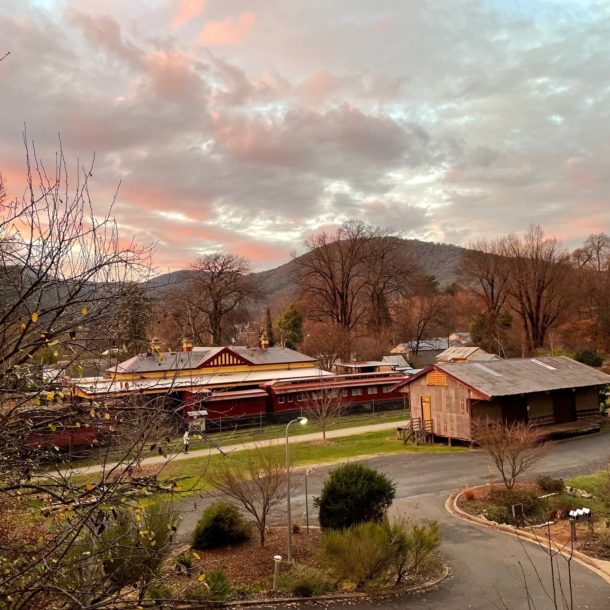Read more about Eliza Lynch
Before he was Edward, she was Eliza, a mother, a wife, and a woman with dreams and desires. Here’s her story.
Eliza Lynch was born in Ireland in 1829. She was, by all accounts, an Irish bond girl from County Carlow who arrived in ‘Van Diemen’s Land’ at the age of twenty, ending up in Victoria some years later.
In 1855 Eliza married Richard Moate; they had two children, George in 1857 and Edward in 1859, and settled in the Victorian Goldfields area. When Edward was two years old, and in the absence of his father, who had deserted the family (and was being pursued by the police for the crime of desertion), Edward fell ill with syphilis. Eliza treated him with a well-known remedy – a mercury rub – but subsequently, the child died of mercury poisoning (a potentially deadly side-effect of the remedy).
When Eliza’s husband Richard returned to the family six months later, upon discovering the death of his son, he accused Eliza of murdering Edward and abandoned her, taking their four-year-old, George, with him.
Eliza, typically a strong-willed and resourceful woman (and not the kind who could be kept at bay), was riddled with heartbreak and regret after the death of her child. And while stricken with grief – and in fear for her own safety – Eliza did the only thing she could think of to do: flee.
Over the course of a few years, she became a person of many disguises and was arrested under various aliases for theft, prostitution, drunken behaviour, and fighting. Finally, Eliza realised the only way she could survive in a man’s world was to pretend to be one, and so she changed her appearance and took on the name of her youngest son, Edward (Ned).
Disguised as Ned, Eliza made her way from the Victorian Goldfields to Omeo, where she fortuitously met the Clerk of the Courts, a Mr William Phipps, who employed Ned as his groomsman.
We like to believe that Phipps was a good and charitable man – he had set up a school and a library at Omeo – and we also like to think that he helped Eliza maintain her disguise as Ned and enabled her to survive. But in 1879, at the age of 68, Phipps, who had been both Ned’s protector and confidante, unfortunately, passed away. As a testimony of his kindness, Phipps left his entire estate to the now fifty-year-old Ned, comprising his Omeo property and a coal mine in England. Unfortunately, his estate proved to be almost worthless.
Soon after the death of William Phipps, Ned moved from Omeo to live with Phipps’s forty-one-year-old friend and colleague, Dr Benjamin Warren, at the doctor’s surgery in Gavan St in Bright. Given Dr Warren was the doctor for both Omeo and Bright at the time, and whilst in Omeo boarded at Mr Phipps’ residence, there was no doubt he was familiar with Ned and most likely had an agreement with Phipps upon his passing to look after Ned’s welfare.
Ned is then employed as Dr. Warren’s manservant and lived happily with him for the next five years. But when the doctor dies suddenly in 1884, Ned is so overcome with grief (and no doubt terror) that she heads to the streets of Bright in a state of madness. Ned is arrested and taken to the Beechworth Lunatic Asylum, where, upon admission, is diagnosed as suffering ‘Religious Mania’ and sent to the men’s ward. Not long after, though, they discover her true identity and confirm Ned is, in fact, a woman. Despite this revelation, and consequent move to the women’s section of the asylum, Ned retains a masculine identity until her death from gangrene at age 59 in 1887, less than three years after her admission to the asylum.
You might wonder why such a story matters to us. Why concern ourselves with the past, particularly a complicated one that sometimes doesn’t paint its protagonist in the best light? We had questions too.
Was Ned the doctor’s secret lover? Was Eliza transgender? Did the doctor even know Ned wasn’t a man? How could he not know? Did Eliza have something over him? Did they all have secrets?
Whether Eliza was any or all of these things, we may never know, yet one thing is clear to us: she was simply doing her best to survive. Eliza’s courage during the hardships of life in the late 1800s, of motherhood – womanhood – to the extent she changed her appearance and lived as a man, we thought, made her someone whose memory should be resurrected.
We hope that when you stay at Eliza’s, you are reminded of the strength of women who carved a life on foreign land amidst brutality and hardship and of those in the margins who have been vilified for being themselves.
And as you relax, surrounded by Eliza’s simple beauty and the comforts she contains, we also hope you take some time to think of Bright’s rich history and the characters of Eliza’s past.
The design and building of Eliza’s have been our way of honouring the story of Eliza Lynch/Edward (Ned) Moate and of paying homage to Eliza’s will, determination, and her strength to survive in the world, come what may.
Welcome to Eliza’s.
Stay up-to-date with news and developments at Eliza's Bright:
Within the surrounding alpine peaks, river valleys, and high plains of this region are the boundaries where the traditional lands of the Dhudhuroa, Taungurung, Waywurru, Gunaikurnai, and Jaithmathang peoples meet. We acknowledge these First Peoples as the original storytellers and Traditional Custodians of the Alpine Shire and pay our respects to Elders past, present, and emerging.


Within the surrounding alpine peaks, river valleys, and high plains of this region are the boundaries where the traditional lands of the Dhudhuroa, Taungurung, Waywurru, Gunaikurnai, and Jaithmathang peoples meet. We acknowledge these First Peoples as the original storytellers and Traditional Custodians of the Alpine Shire and pay our respects to Elders past, present, and emerging.
© Copyright Eliza’s | Design: Design by Avi | Copy: Mighty Writing Co.



